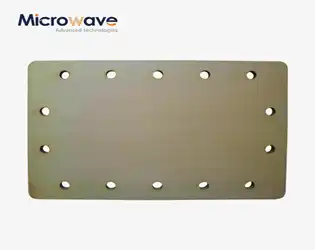BLOG

How to Select the Right Coaxial Detector for Your Frequency Range?
July 3, 2025
Selecting the appropriate coaxial detector for your specific frequency range is a critical decision that directly impacts the performance, accuracy, and reliability of your microwave and RF systems. A Coaxial Detector serves as an essential component designed to convert high-frequency signals into measurable DC or low-frequency outputs, making it indispensable in applications ranging from satellite communications to aerospace and defense systems. The selection process involves careful consideration of multiple technical parameters, including frequency range compatibility, detection sensitivity, power handling capabilities, and environmental requirements. Understanding these factors ensures optimal signal monitoring and power measurement performance while maintaining system integrity across diverse operational conditions.
What Industries Can Benefit the Most from MMDS Transmitting Antennas?
July 3, 2025
Multi-channel Multipoint Distribution Service (MMDS) transmitting antennas have emerged as critical infrastructure components across numerous industries worldwide. The MMDS Transmitting Antenna represents a sophisticated wireless telecommunications technology that enables efficient point-to-multipoint signal distribution, making it invaluable for organizations requiring reliable, high-performance communication systems. These antennas serve diverse sectors including telecommunications, broadcasting, aerospace, defense, and emerging wireless broadband applications. MMDS is used in Australia, Barbados, Belarus, Bolivia, Brazil, Cambodia, Canada, Czech Republic, Dominican Republic, India, Kazakhstan, Kyrgyzstan, Lebanon, Mexico, Nepal, Nigeria, Pakistan, Panama, Portugal (including Madeira), Russia, Slovakia, Sri Lanka, Sudan, Thailand, Ukraine, United States, Uruguay and Vietnam, demonstrating their global applicability and versatility in addressing communication challenges across different geographical and economic contexts.
How Can You Maximize Performance with Our Wide Frequency Range Coaxial Cable Assemblies?
July 2, 2025
In today's rapidly evolving technological landscape, achieving optimal signal transmission performance is paramount for industries ranging from telecommunications to aerospace and defense. The question of how to maximize performance with wide frequency range coaxial cable assemblies has become increasingly critical as applications demand higher frequencies, lower signal loss, and exceptional reliability. At Advanced Microwave Technologies Co., Ltd, we understand that superior Coaxial Cable Assembly solutions are not just components—they are the backbone of mission-critical systems that require unwavering performance across diverse operating conditions and frequency ranges spanning from DC to 110 GHz.
How Does the Precision Ridge Geometry of a Double Ridge Transition Enhance Performance?
July 2, 2025
In the rapidly evolving landscape of microwave technology, the precision ridge geometry of a Double Ridge Transition stands as a critical engineering achievement that fundamentally transforms electromagnetic wave propagation efficiency. This sophisticated component leverages meticulously designed ridge structures to create optimal field distribution patterns, ensuring superior signal integrity across diverse frequency ranges from 1 GHz to 110 GHz. The Double Ridge Transition's unique geometric configuration addresses the fundamental challenge of impedance matching between different waveguide systems while maintaining minimal signal loss and exceptional power handling capabilities. Understanding how precision ridge geometry enhances performance requires examining the intricate relationship between electromagnetic field theory and mechanical design principles that govern modern microwave communication systems.
How Does the Waveguide Short Plate Fit Seamlessly into Various Waveguide Types?
July 2, 2025
In the complex world of microwave engineering, achieving seamless integration across diverse waveguide systems requires precision-engineered components that can adapt to varying specifications while maintaining optimal performance. The Waveguide Short Plate stands as a critical component that bridges compatibility gaps between different waveguide types, ensuring reliable signal termination and reflection across frequency ranges from 1.72 GHz to 110 GHz. This versatile component's ability to fit seamlessly into various waveguide configurations stems from its sophisticated design methodology, which incorporates standardized flanging systems, precise dimensional tolerances, and material properties optimized for electromagnetic compatibility. Understanding how these short plates achieve universal compatibility requires examining their mechanical design principles, electrical characteristics, and the engineering standards that govern their integration into complex microwave systems across satellite communications, defense, aerospace, and telecommunications applications.
How Do Waveguide Low Pass Filters Support R\&D in High-Frequency Testing?
July 2, 2025
In the rapidly evolving landscape of high-frequency research and development, precision instrumentation forms the backbone of breakthrough discoveries and technological advancement. Among the critical components that enable accurate measurements and reliable data collection, waveguide low pass filters stand as indispensable tools that shape the future of microwave and millimeter-wave applications. These sophisticated filtering solutions play a pivotal role in ensuring signal integrity, eliminating unwanted frequencies, and maintaining measurement accuracy across diverse R&D environments. Understanding how Waveguide Low Pass Filter technology supports modern research initiatives reveals the intricate relationship between advanced filtering mechanisms and successful high-frequency testing protocols that drive innovation across telecommunications, aerospace, defense, and emerging 5G/6G communication systems.
What Are the Applications of High Power Waveguide Circulators in Modern Radar Systems?
July 2, 2025
Modern radar systems represent the pinnacle of electromagnetic engineering, requiring components that can handle substantial power levels while maintaining signal integrity across demanding operational environments. At the heart of these sophisticated systems lies a critical component that ensures optimal signal flow and system protection: the High Power Waveguide Circulator. These specialized devices serve as electromagnetic traffic controllers, directing high-frequency signals along predetermined paths while preventing potentially damaging reflections from reaching sensitive transmitter components. As radar technology continues to evolve toward higher frequencies, greater power levels, and more complex operational requirements, the role of High Power Waveguide Circulators becomes increasingly vital in maintaining system reliability, performance, and longevity across military, commercial, and scientific applications.
What Are the Key Advantages of Using a Waveguide Loop Coupler?
July 2, 2025
Waveguide loop couplers represent a cornerstone technology in modern microwave engineering, offering unparalleled precision and reliability in signal distribution and power coupling applications. These sophisticated components have become indispensable in high-frequency systems where maintaining signal integrity and minimizing losses are paramount. The Waveguide Loop Coupler stands out as a critical component that enables efficient power transfer between waveguides while providing excellent isolation and minimal insertion loss. With applications spanning satellite communications, aerospace systems, and advanced radar technologies, understanding the key advantages of these devices is essential for engineers and system designers seeking optimal performance in their microwave implementations.




